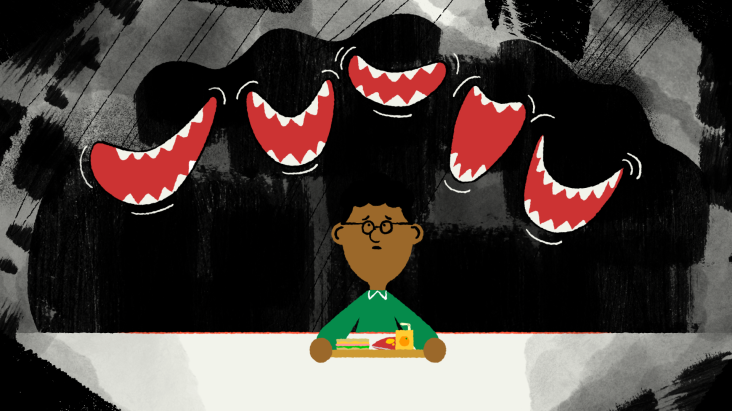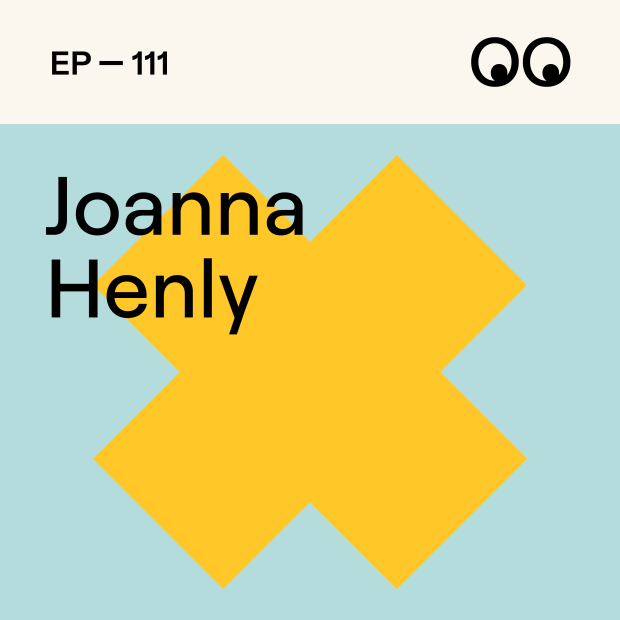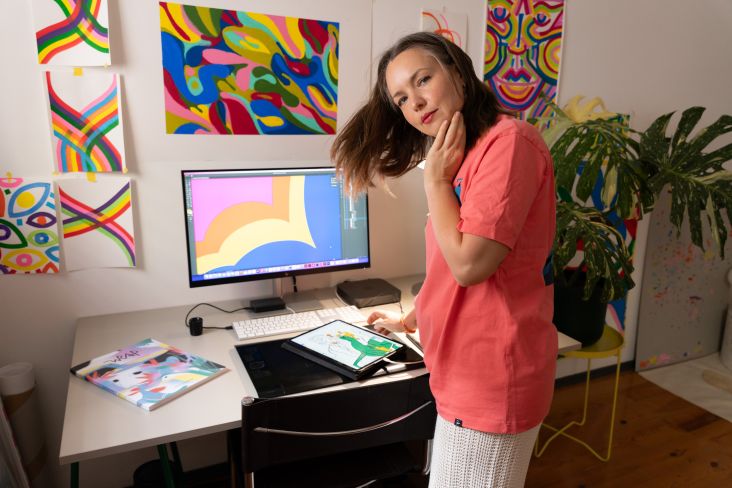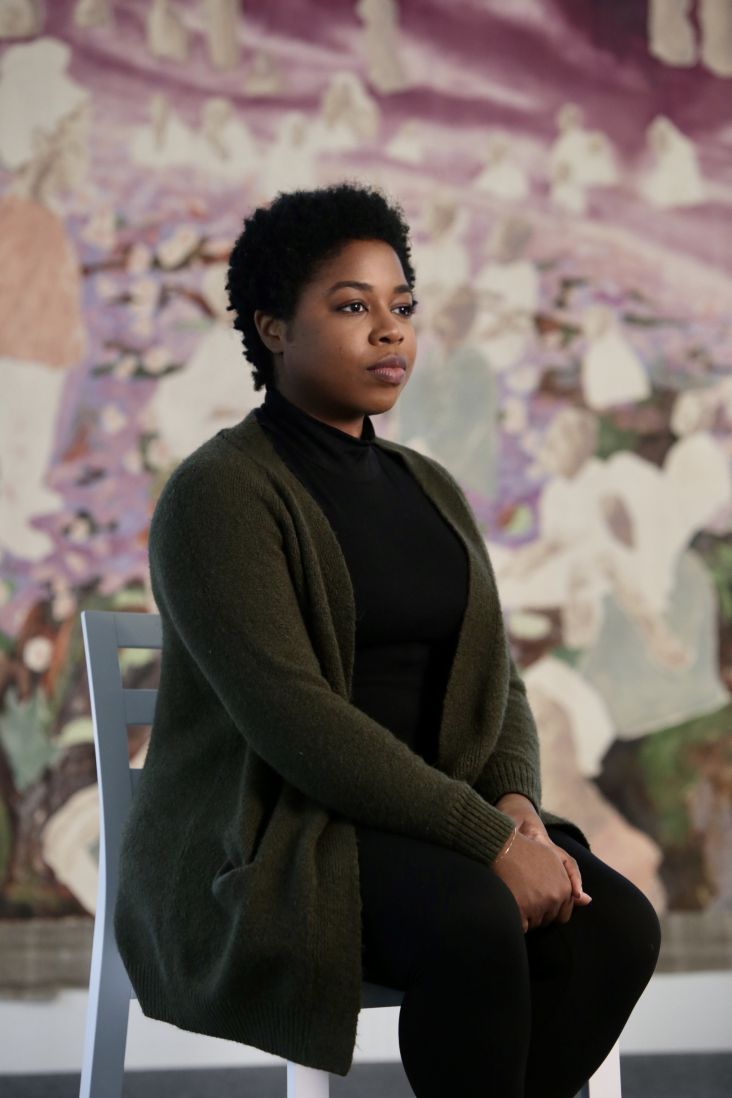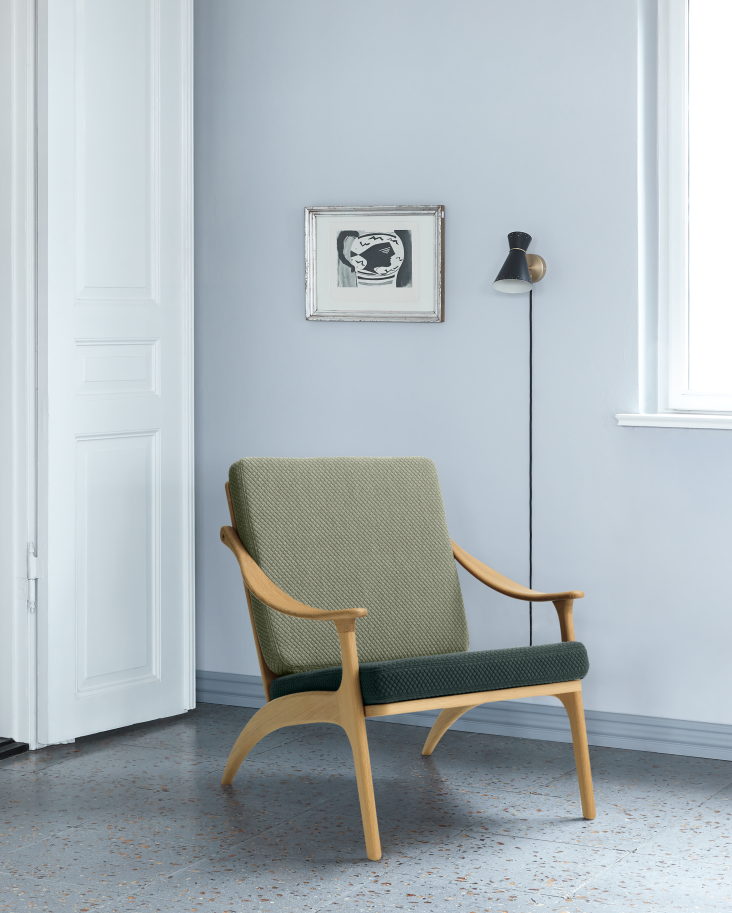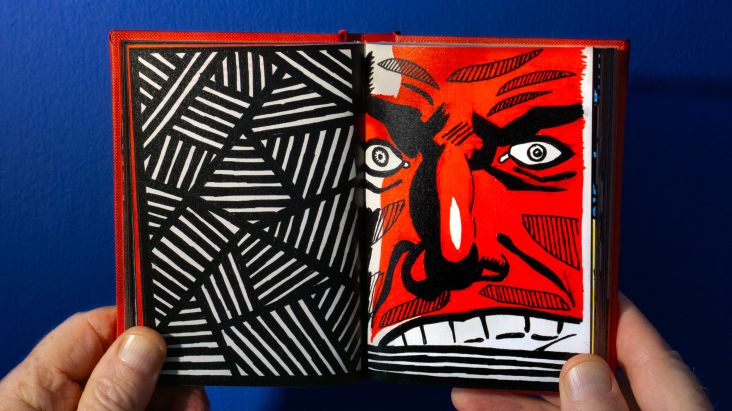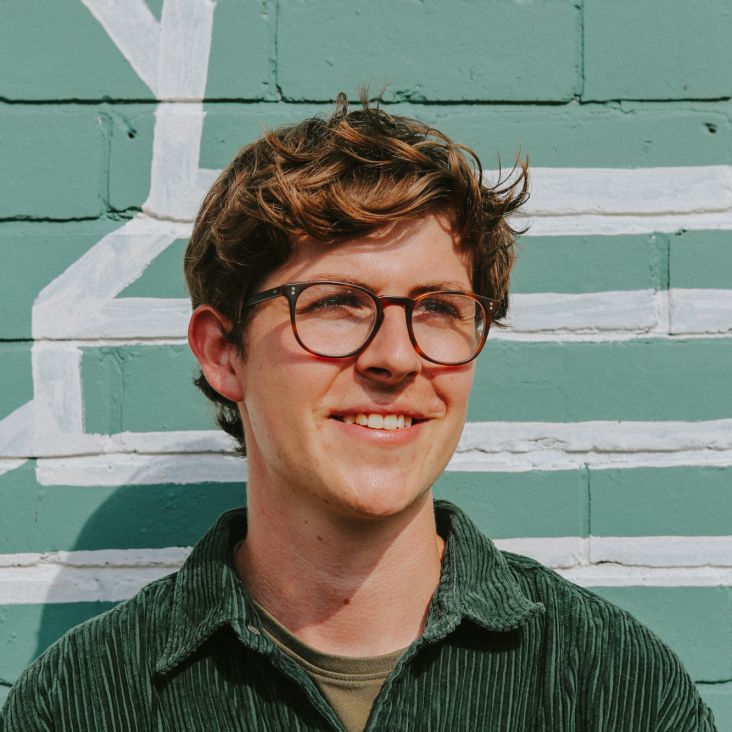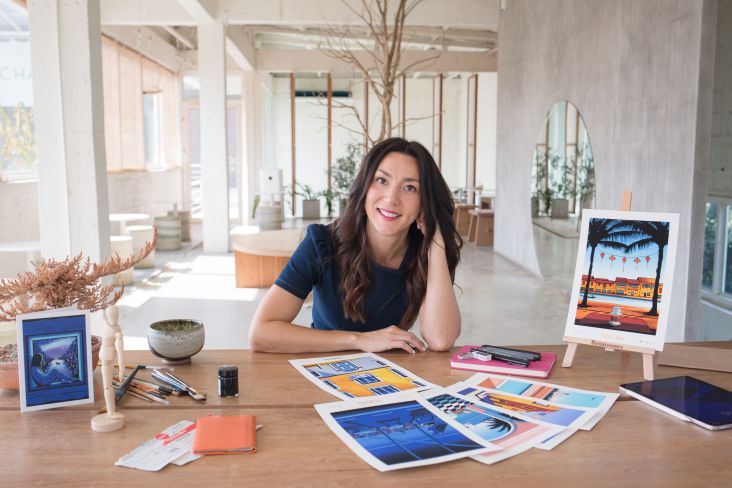Cecilie Maurud Barstad on what inspired her illustrated short stories of lockdown life
The Norwegian author and illustrator explains why she turned small tales of north London domesticity during the pandemic into an evocative book, Rear Windows.
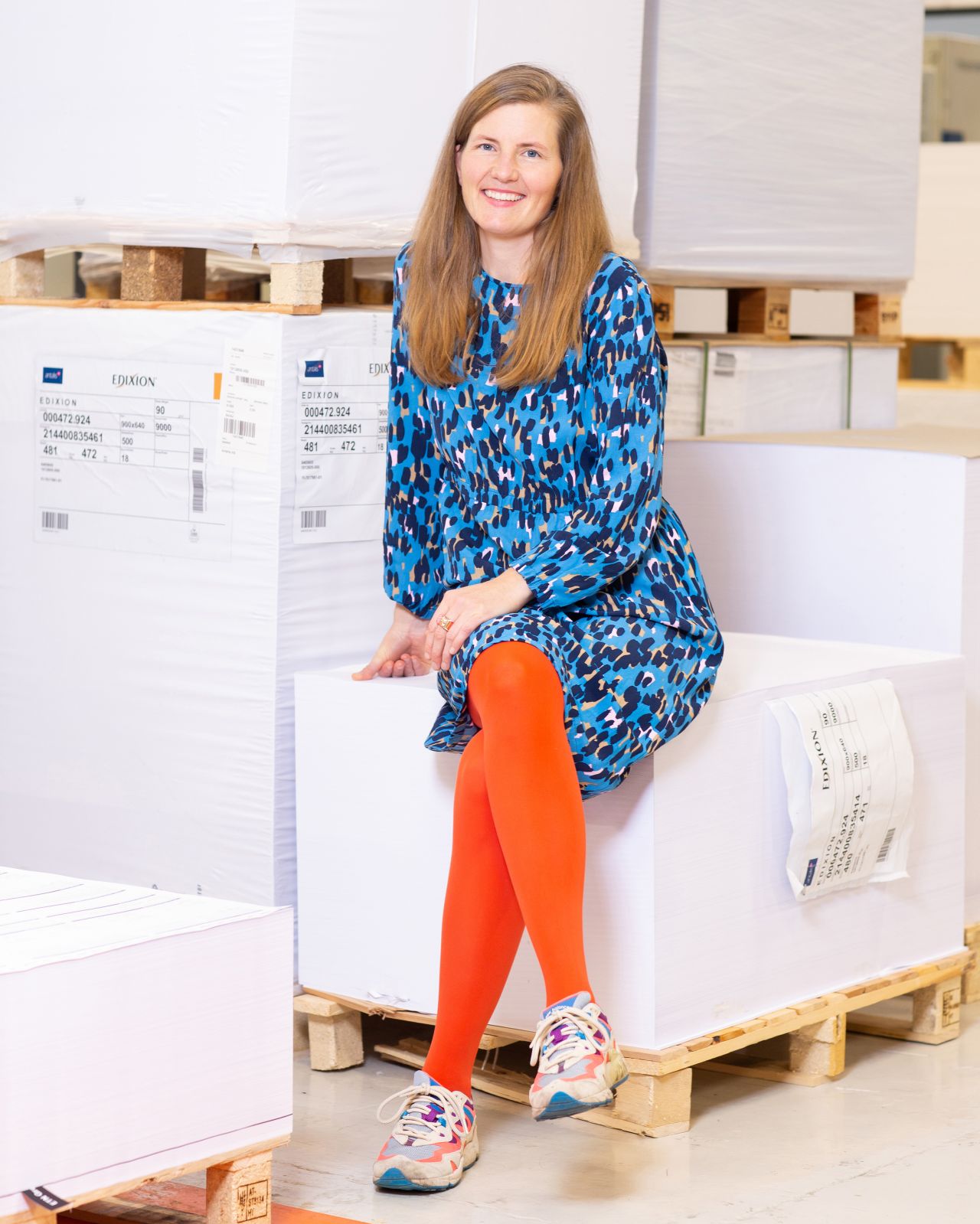
Cecilie Maurud Barstad. Photography by Charlotte Wiig
It's a bit weird, isn't it? For most people, lockdown was the biggest event in our lives and probably the one that had the most dramatic impact on us. And yet, the number of art and design projects directly discussing this incredible global upheaval has been relatively few.
Perhaps it's because, once things started returning to normal, most of us just didn't want to think about lockdown any more. However, time is a great healer, and as the 2020s continue, we can probably expect more reflection on those momentous events and greater confidence in discussing the highs and lows of the period openly and honestly.
And here's a great example to follow. Rear Windows is a series of illustrated short stories by Cecilie Maurud Barstad, observing life during lockdown.
It's a fabulous book, and in the foreword, Lene Renneflott explains exactly why: "As a writer, Cecilie captures the urban isolation's slow passage of time and underlying quarantine stress. Short bursts of text filled with longing, twists, and endless waiting pinpoint each illustration to the coronavirus crisis. The illustrator's gaze allows us to study her neighbours from afar, while the writer's pen invites us into their innermost thoughts, dreams or worries – into the recognizable – into the profoundly human."
We couldn't agree more and were keen to chat with Cecilie to learn more about the book. But first, in case you didn't know, who is Cecilie, exactly?
Who is Cecilie?
Born in Norway and now living in London, Cecilie is a creative director and illustrator working alongside her partner Gilles at Gilles & Cecilie Studio. They provide unique illustration, animation and murals to clients and creatives worldwide from their headquarters in London. But in 2020, she embarked on something different.
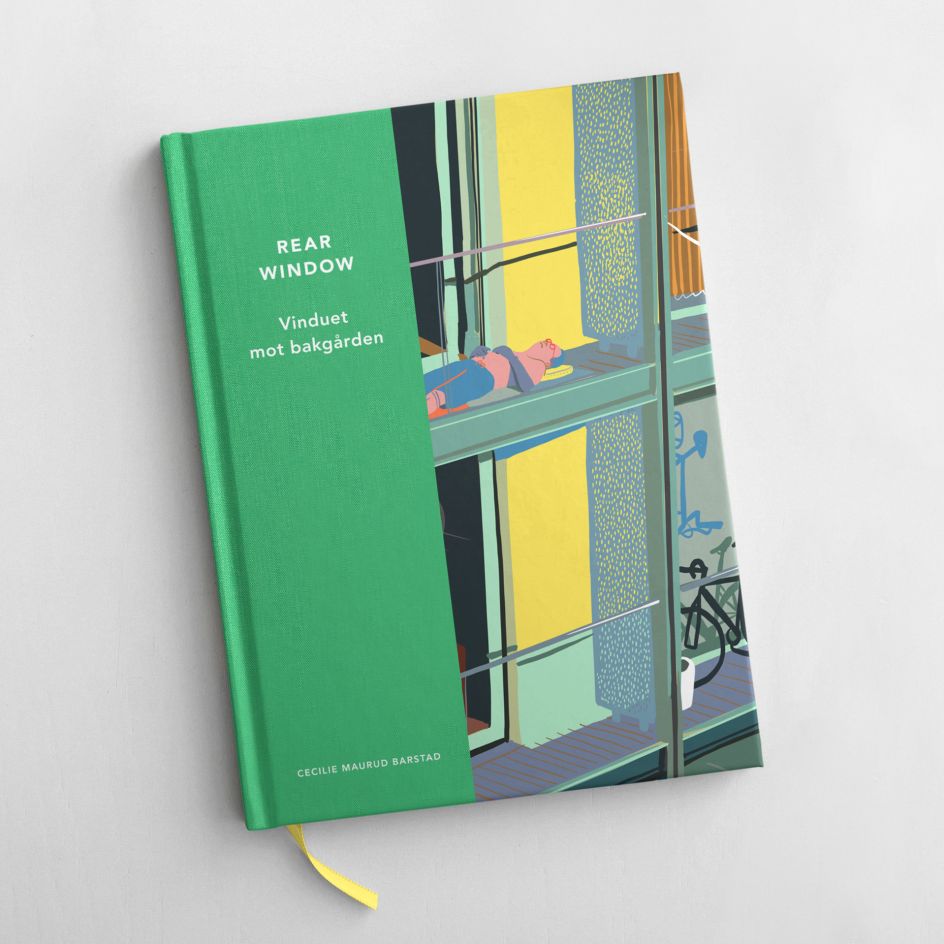
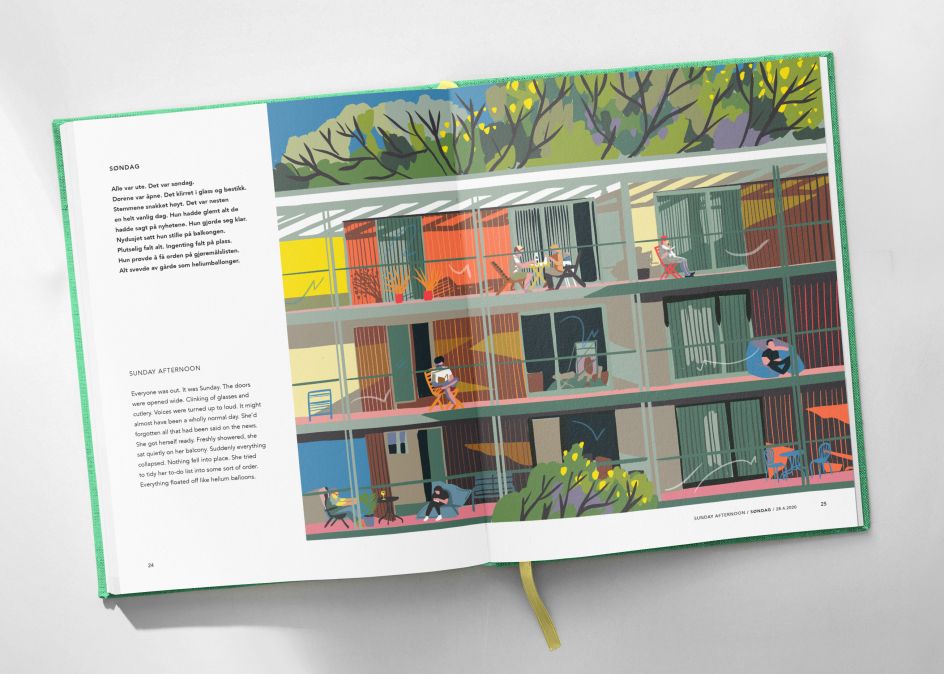
From the balcony of her home, a development of 650 sustainably-designed flats converted from the old Arsenal Stadium, she spent weeks and months observing, studying, and drawing her neighbours.
In her colourful images and pithy narratives, the reader enters her back courtyard in Highbury with all its smells, conversations, noise, silence, morning light, and night-time shadows. The stories are warm, wise and full of lovable characters. We share three short stories from it to give you a flavour.
The first, A New Start (p63), reads: "They were supposed to be getting divorced. They'd discussed and planned it in February. Everything was decided. It was a relief. Overnight, everything was shut down. Even the law firm was closed. Everyone had to stay home. No one could go out. It was the start of something new. Every day, they sat together on the balcony in the fine weather. They drank tea. They read the books that had been on their shelves. They tidied wardrobes and kitchen cupboards. They dusted off the video player to watch old films. They talked together for hours. They did everything they hadn't done before. They started again."
Next is Threesome (p66), which says: "Straight away, they moved in with him. None of them wanted to spend lockdown alone. They all agreed on one suitcase each. He only had one bedroom, but they could live with that. The thought of not being together was much worse. They've been a trio for almost three months. They make food together, they exercise together, they laugh at the same jokes, they share a bathroom and a bed, they get up at the same time, and rely on each other when they need each other most."
And finally, Clouds (p68) reads: "It was a windy day. He'd almost succeeded in getting her to lie down on the grass to watch the clouds scudding past. He loved watching clouds. He could make out rabbits, faces, and a horse's head. She was simply unable to let her mind wander off like that. How could he just lie there and relax? How could he? They had so much to do. They'd never get through everything on their lists. Some lists were written on both sides of the paper. She added to them every day. Some items had been on a list for years. Was it this that kept them together? All the unfinished business on their lists? What would happen when everything was done? She left him lying there. She had to go in and change out of these tight leggings."
Sunshine in the gloom
As you can tell from these stories, while the pandemic was a serious, often tragic event, there was also a lot of sunshine amidst the gloom. "The most fun we had was being in the communal private garden with our children," recalls Cecilie. "We parents would sit at a two-metre distance and get to know each other by shouting, while the toddlers and young kids ran, cycled and scooted around.
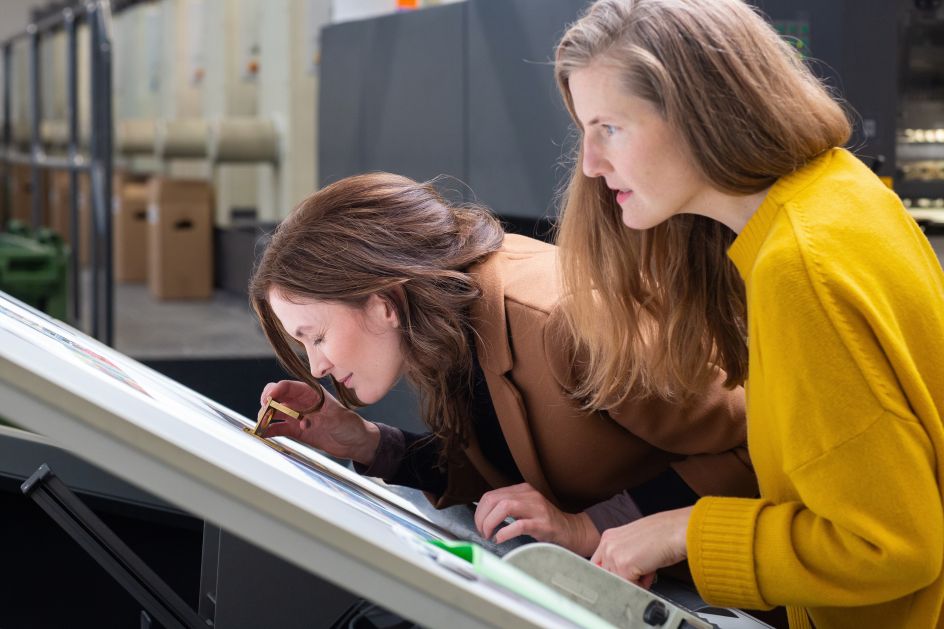
Photography by Charlotte Wiig
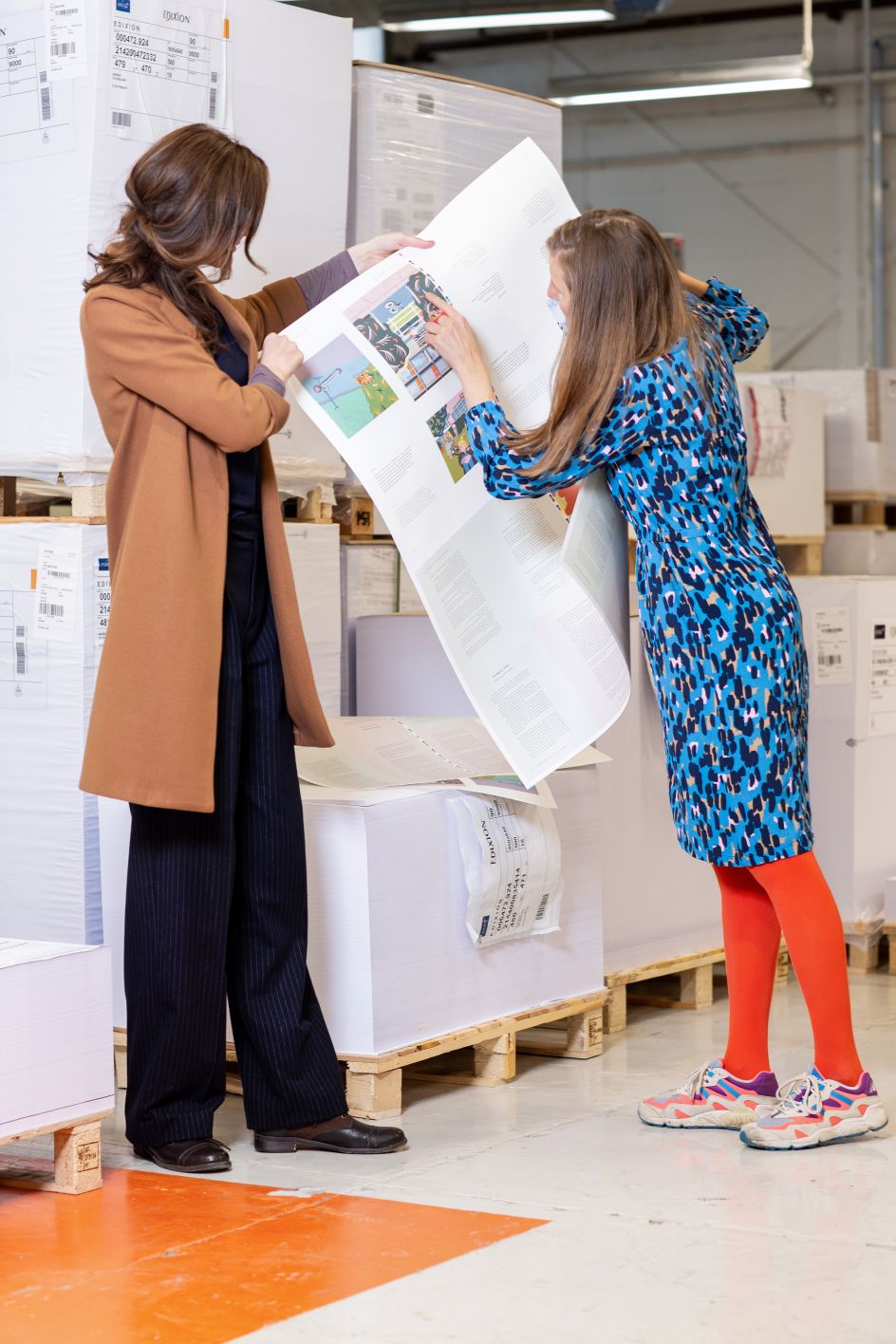
Photography by Charlotte Wiig
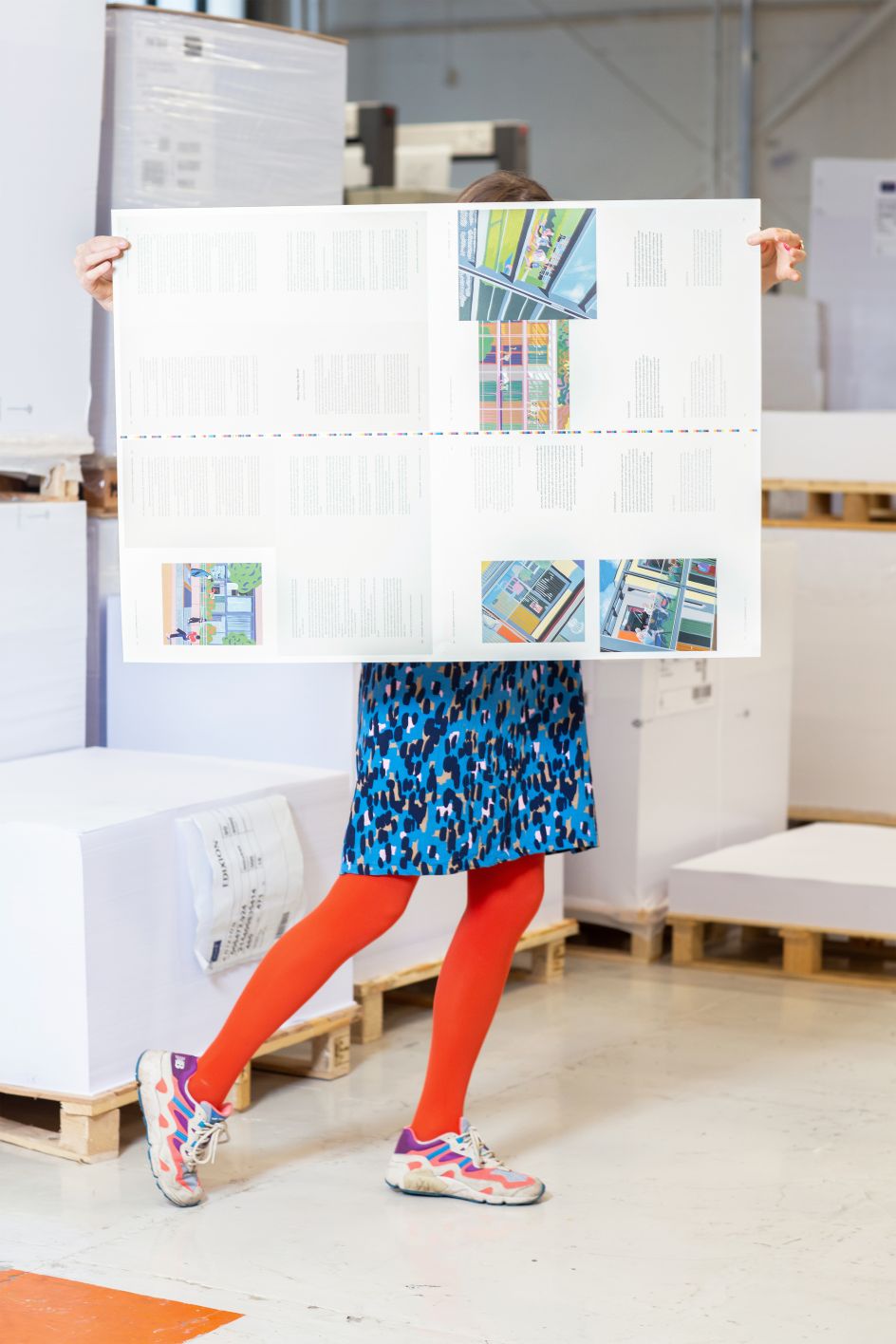
Cecilie Maurud Barstad. Photography by Charlotte Wiig
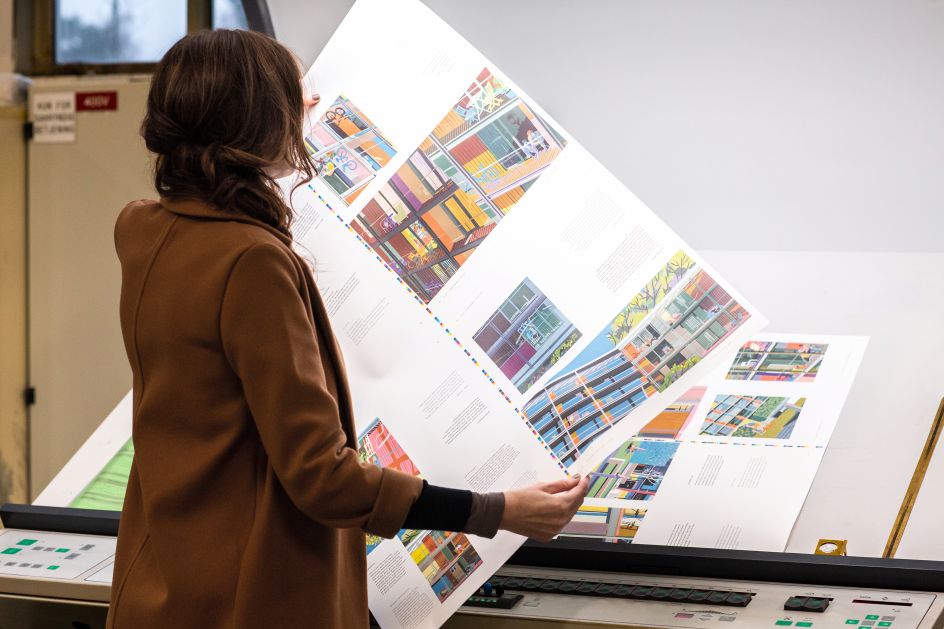
Photography by Charlotte Wiig
"After a while, we got to know each other better but would still talk at a distance, even with private conversations. It just wasn't possible to sit in quiet conversation. That, and also talking across balconies, sharing loss and trivialities into the echo of the backyards."
As with us all, the phrase 'mixed emotions' doesn't really cover it. "When the first lockdown happened, I had a hotpot of feelings that I tried to sort into ingredients," Cecilie remembers. "Slight panic, sadness and a feeling of not understanding. I work with my partner Gilles in our studio, and we had meetings cancelled, travels and some work put on hold. Suddenly, we were in an unknown void.
"Naturally, I spent much time looking out the window as I often do when looking for answers. I figured that if I drew here a little bit every day, at least I'd be making something that potentially could be a collection in the end."
Inspired by relationships
As for finding things to draw, that wasn't a huge problem. "I am inspired by the things closest to us: home, thoughts, emotions, relationships, daydreaming and imagination," she says. "And the weather was incredibly nice, so suddenly I could see my neighbours on their balconies."
Cecilie explains that she's always been interested in relationships, conversations and everyday problems between people, particularly within households. "What do they talk about? What are their secrets? What motivates them? How can they watch TV every day? How can they live like this or that?
"My genuine interest in what is close to us is an endless source of inspiration. Everyday things like routines, perfection of routines or getting rid of bad habits. Each short story in this book has a source in how I felt, what I saw and conversations with friends and family".
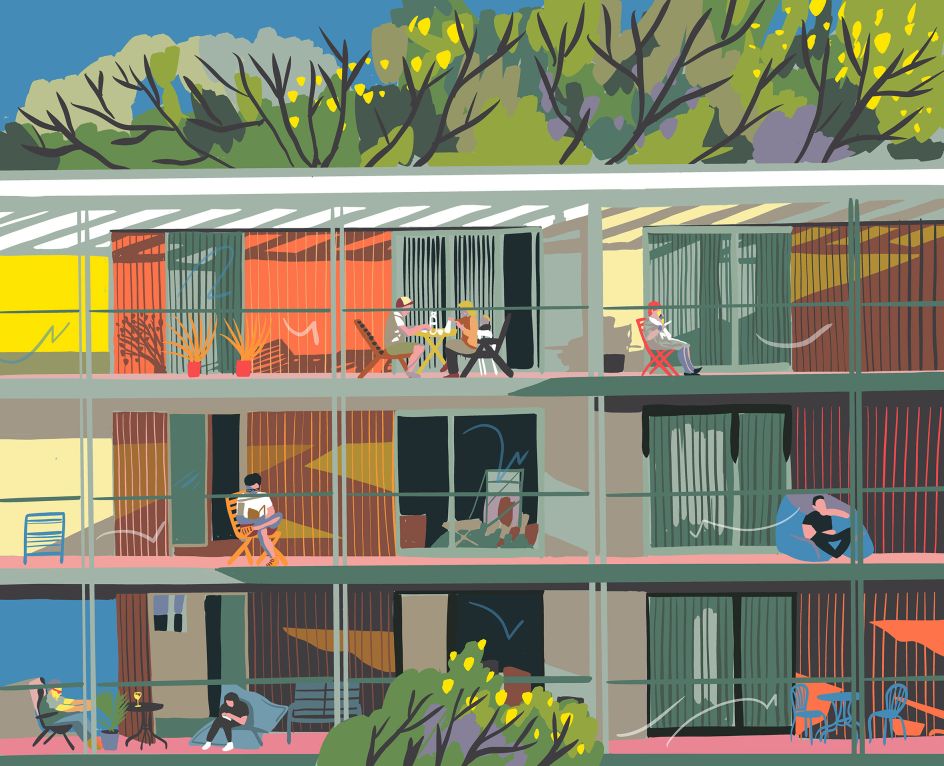
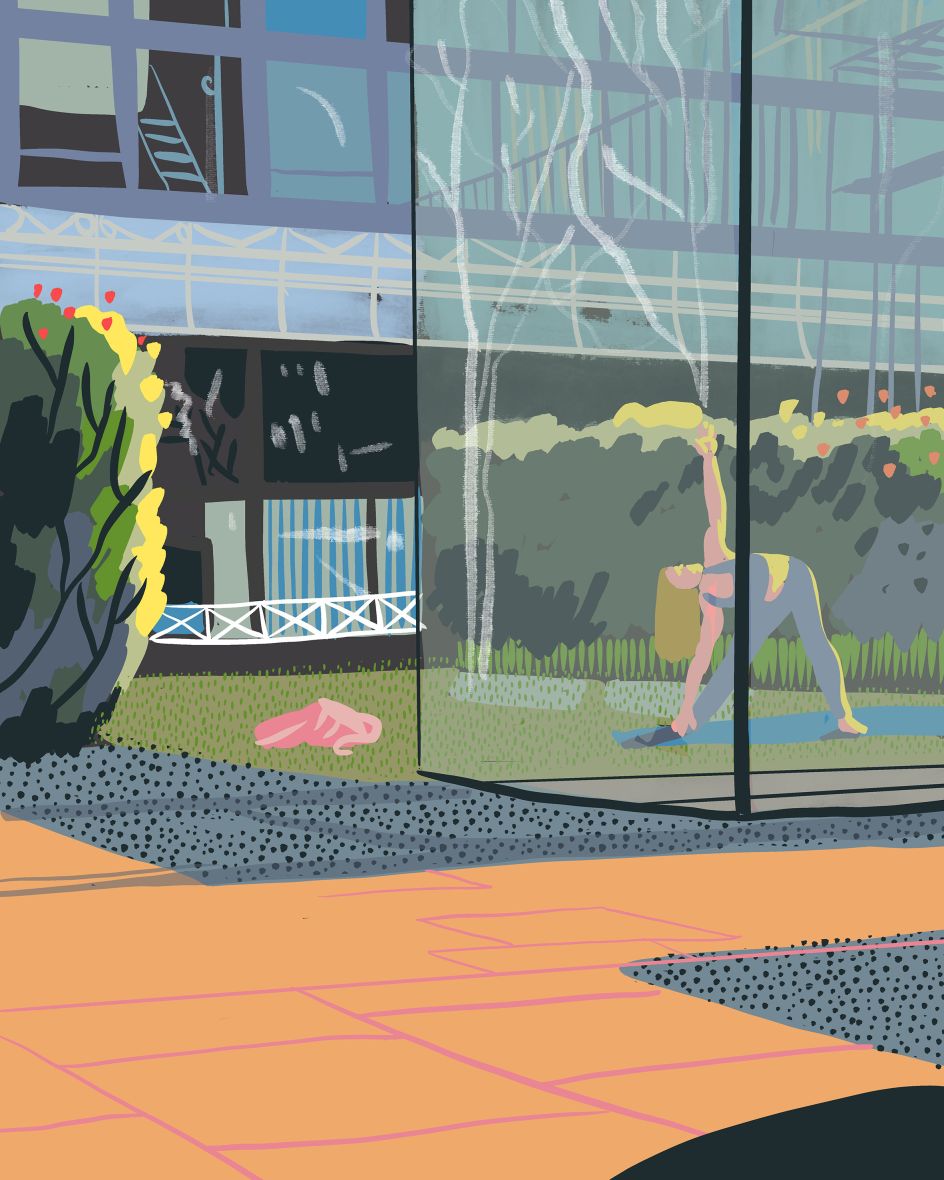
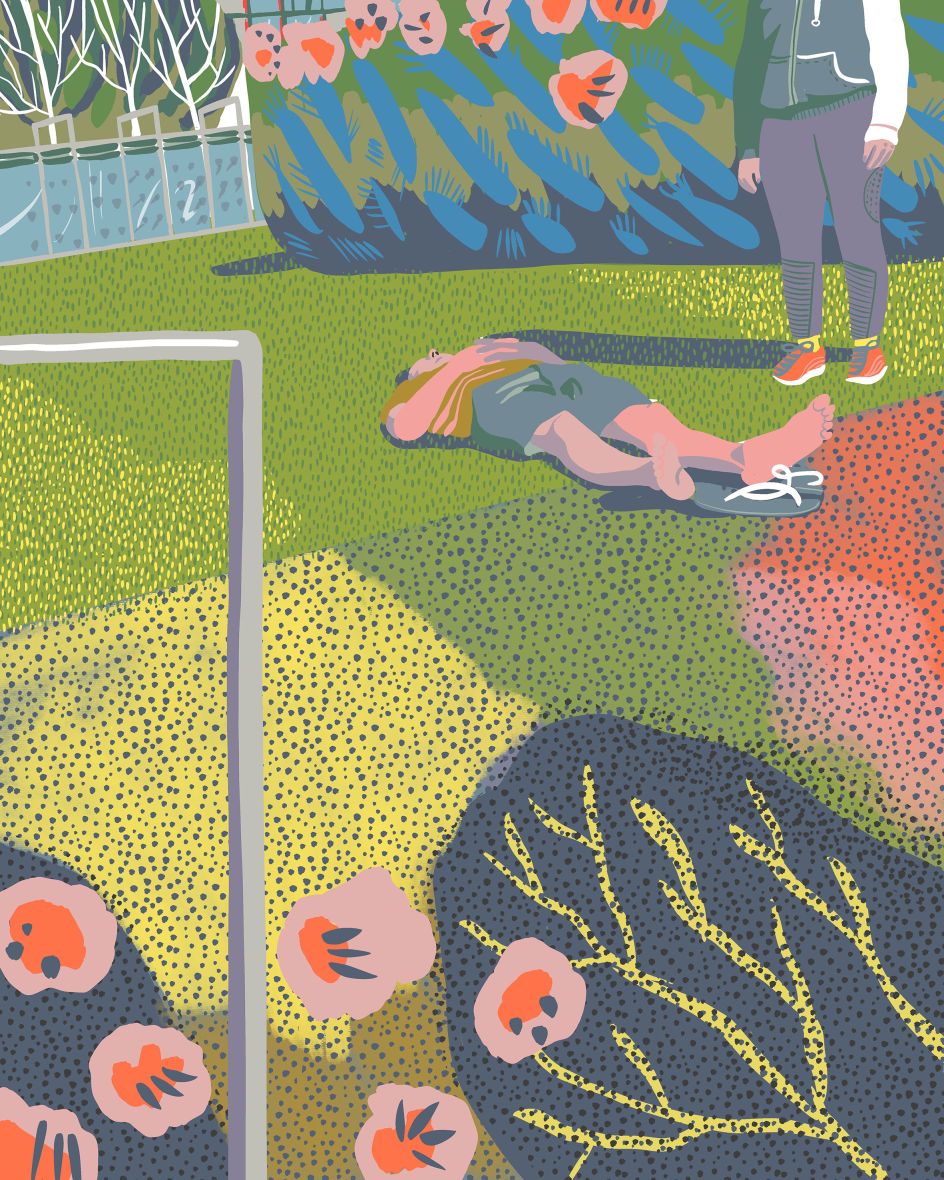
All are beautifully illustrated in Cecilie's signature style, which she describes as "colourful compositions of architecture, urban nature, patterns, lights and shadows with human relations within. I strive to create a playful perspective; it's figurative, but I leave out many details to not make it look too worked or perfect. I like to create compositions that have a certain dreamy view. Like frames in an animation, my images are a snapshot of that moment and the next moment, everything is changing."
Optimism vs chaos
Since that fateful Covid outbreak in 2020, everything has changed, not in a good way. At least this hasn't taken Cecilie too much by surprise. "I had a hunch that it would last long," she recalls. "I remember Gilles and I discussed it would take years, so we tried to make a plan on how we would survive this for the next three years or more."
That doesn't mean, of course, that she welcomes the current global turmoil. "The fact that social, political and economic crisis followed suit after the pandemic has created a sort of hopelessness," she reflects. "Some say that it's in a crisis one can create and come up with fantastic new things. Maybe you can get out of smaller and shorter crises, but it is hard to constantly push for innovation, imagination, and creativity when the world is bleak, even for a born pragmatic optimist like myself."
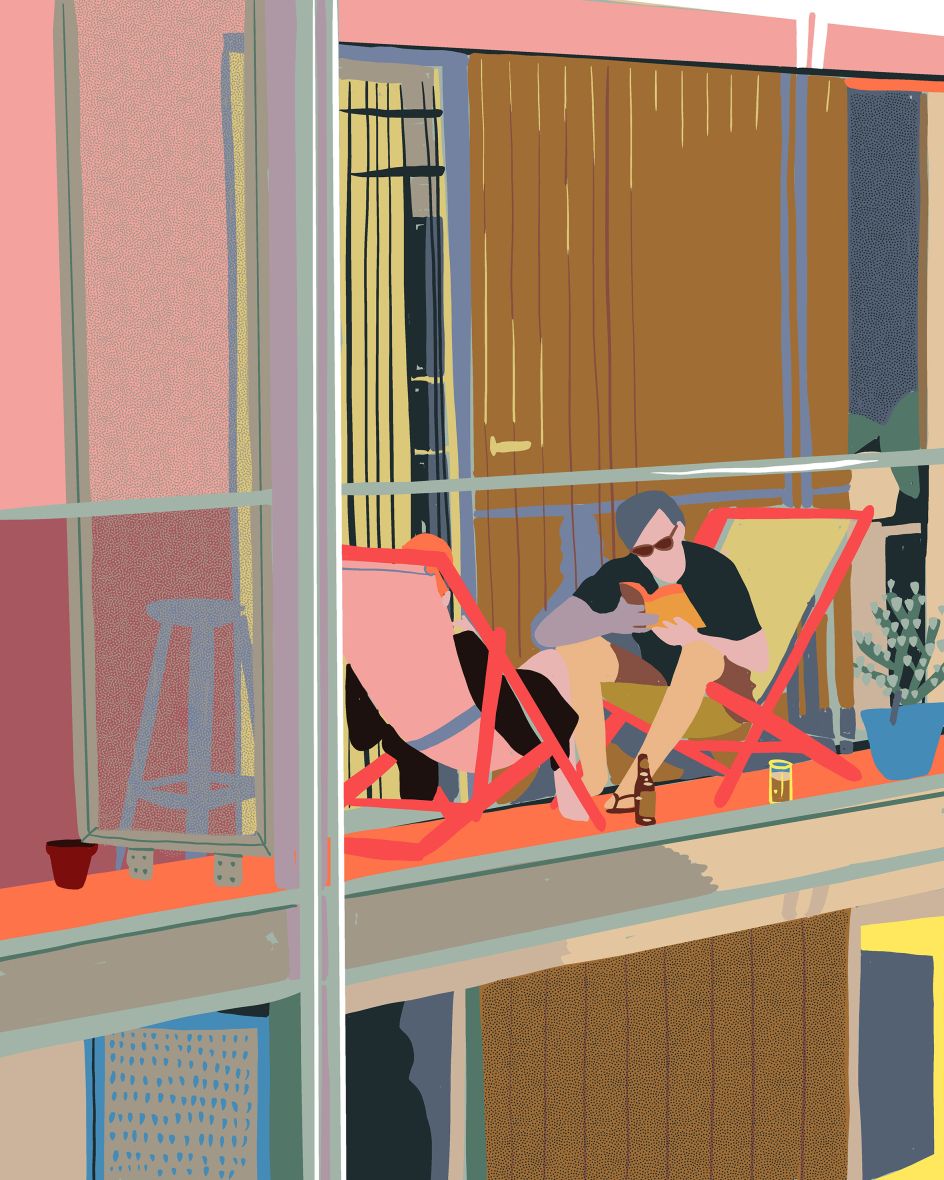
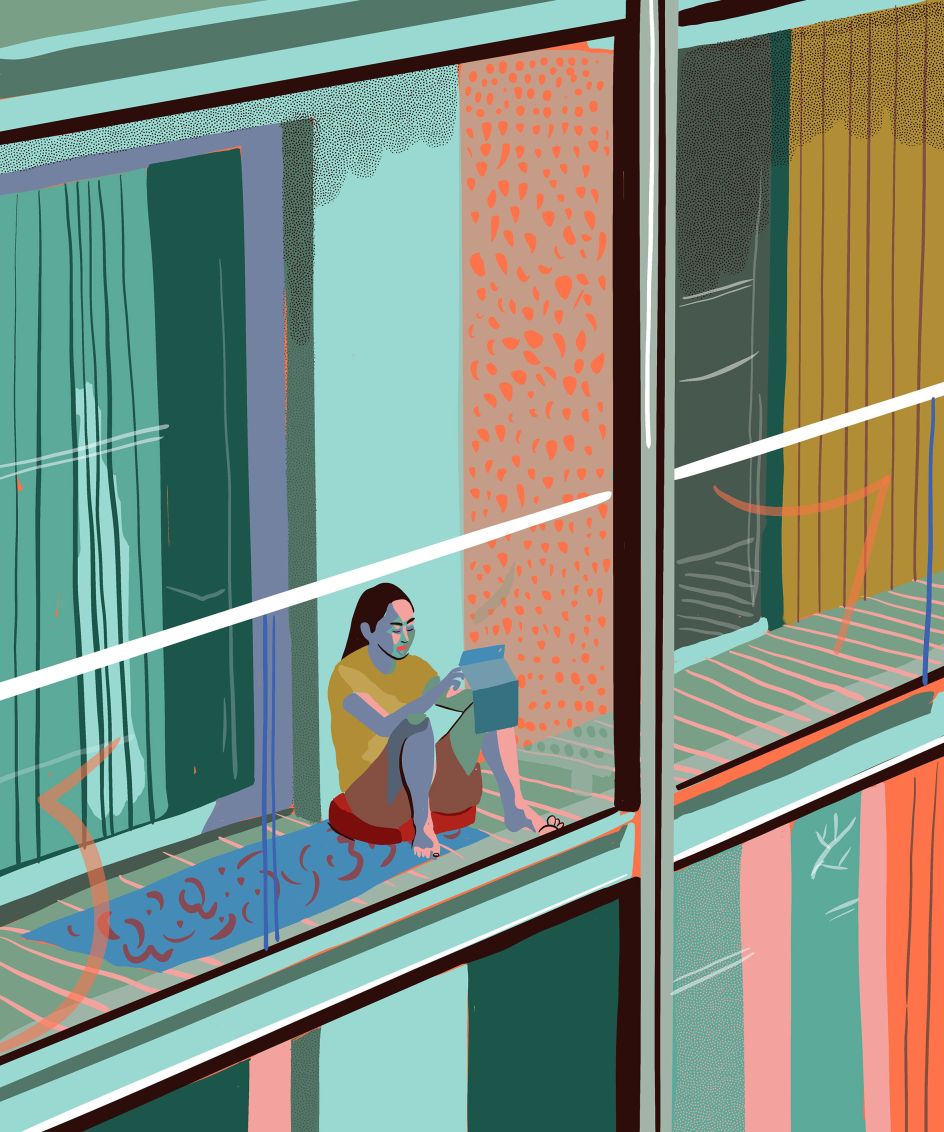
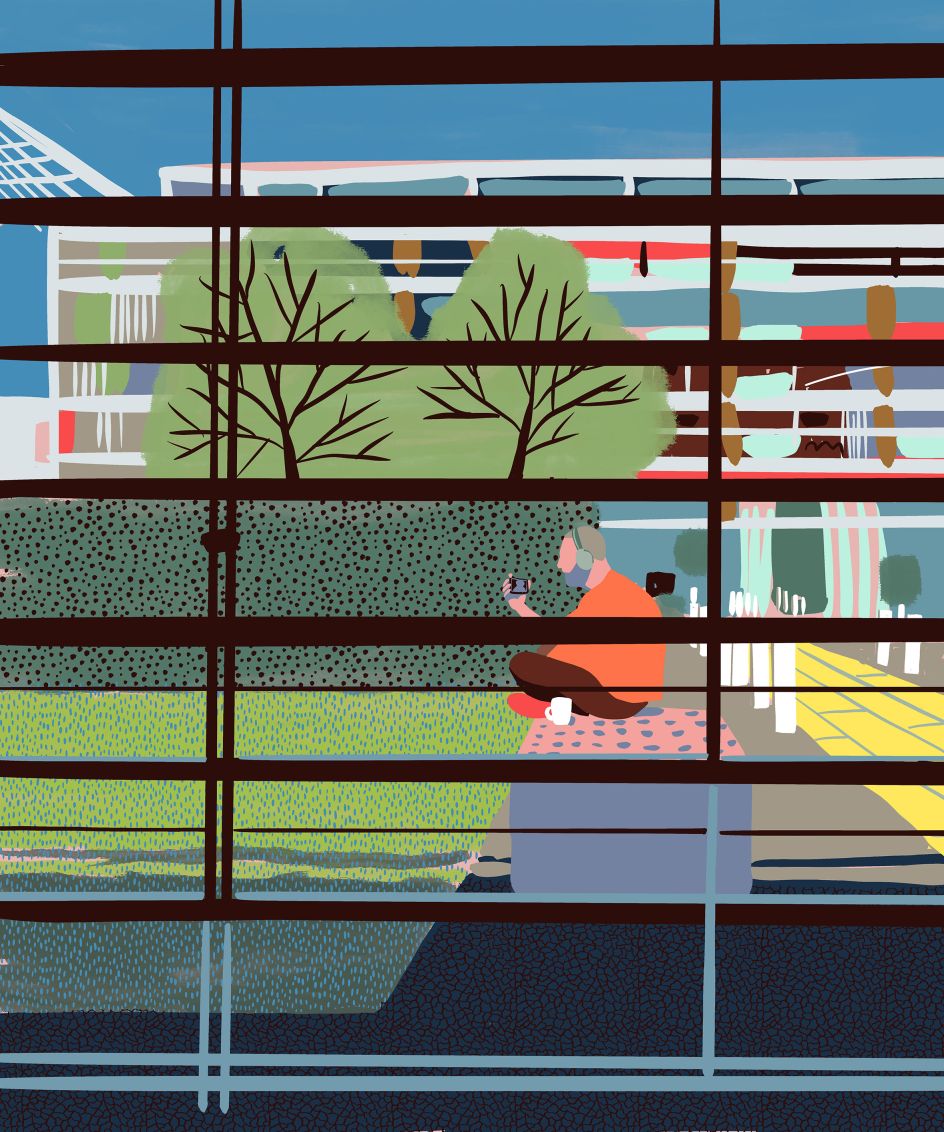
For Cecilie, these last years have been spent caring for herself and focusing on what's most important to her. "Like making projects I care about, such as the book. I read, exercise, cook, sleep, spend time with friends and family, draw every day, write new books, and, in essence, pursue meaningful creative projects.
"I needed to create some positive experiences and personal investments to keep my mind on something other than current affairs. As a creative practitioner, I have a responsibility to paint the time we live in. This book of short stories and illustrations is my contribution to 2020, the year everything was suspended."









